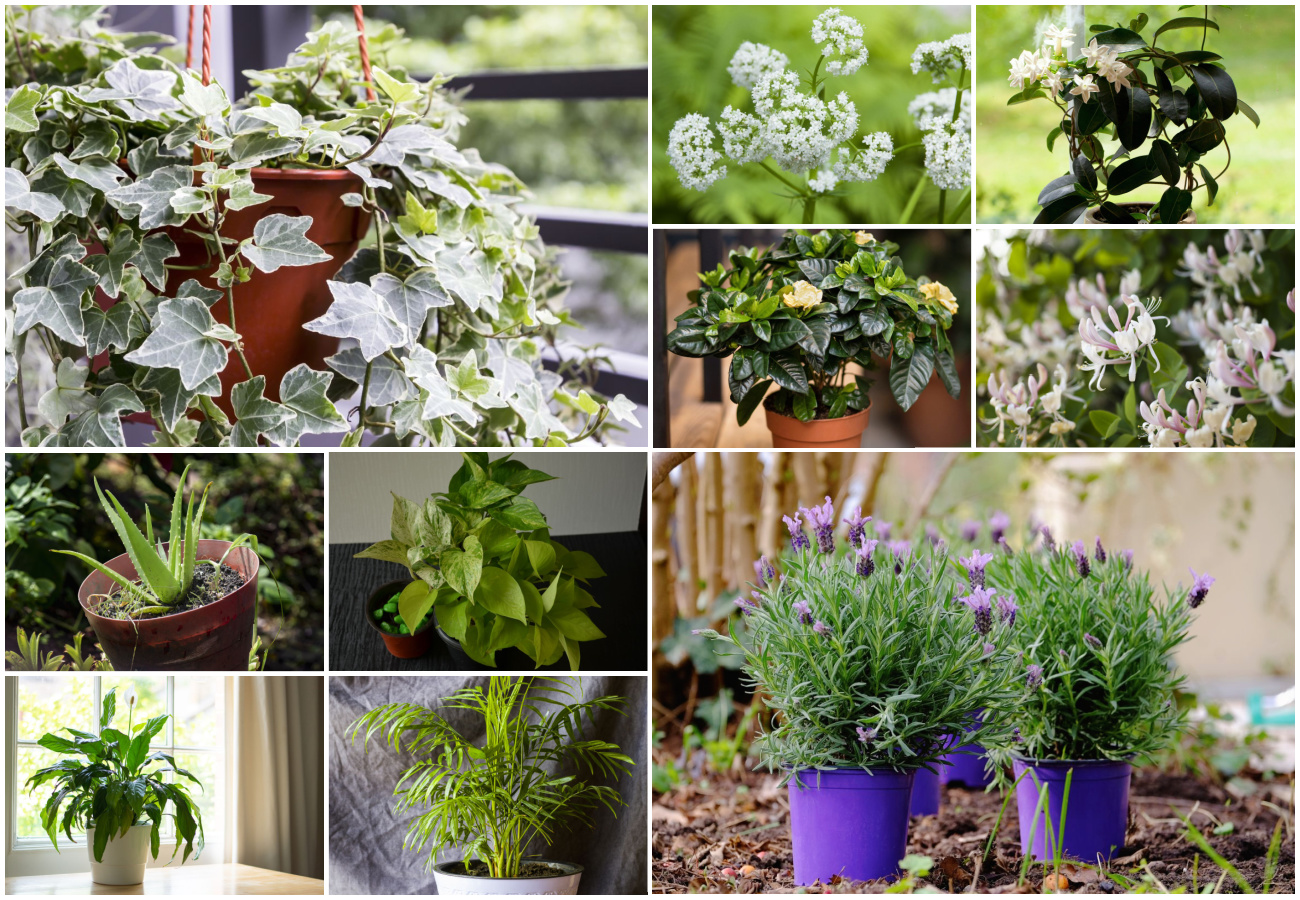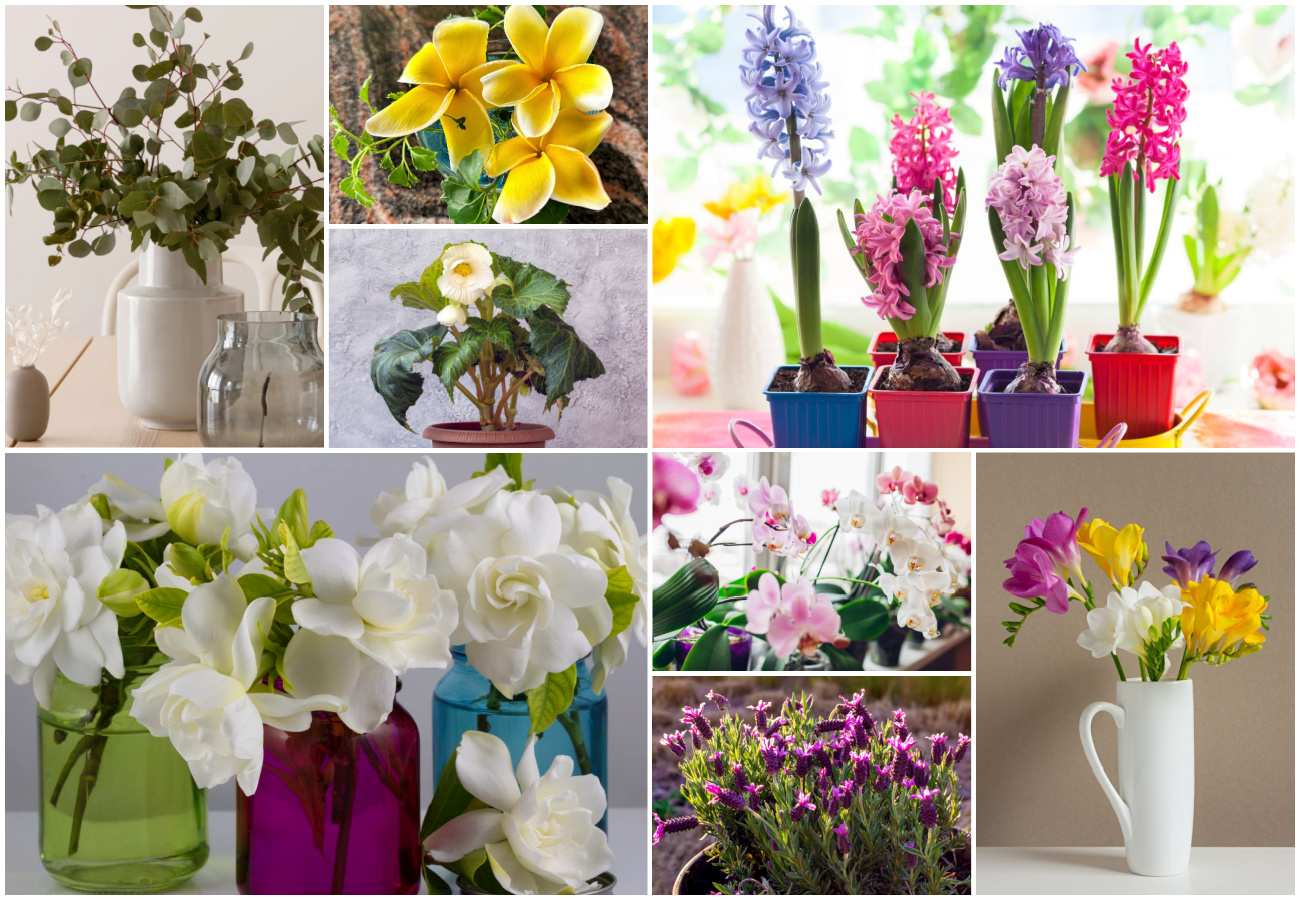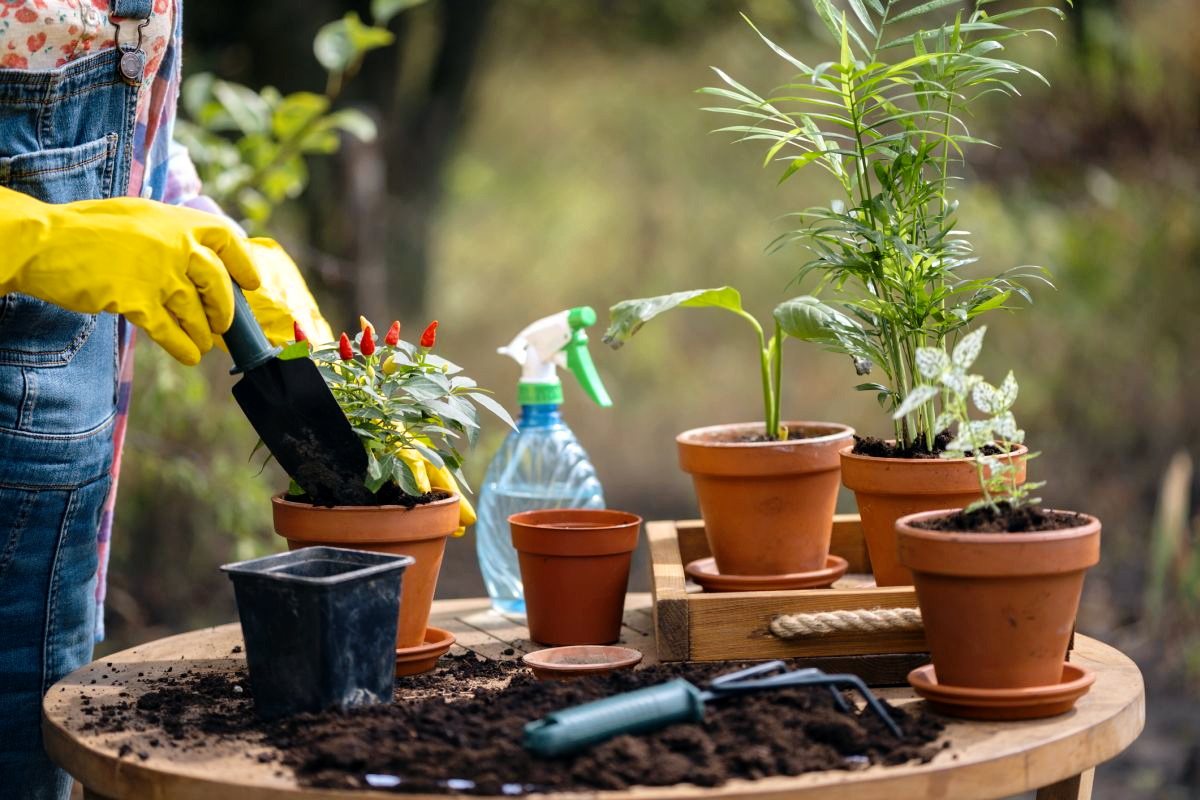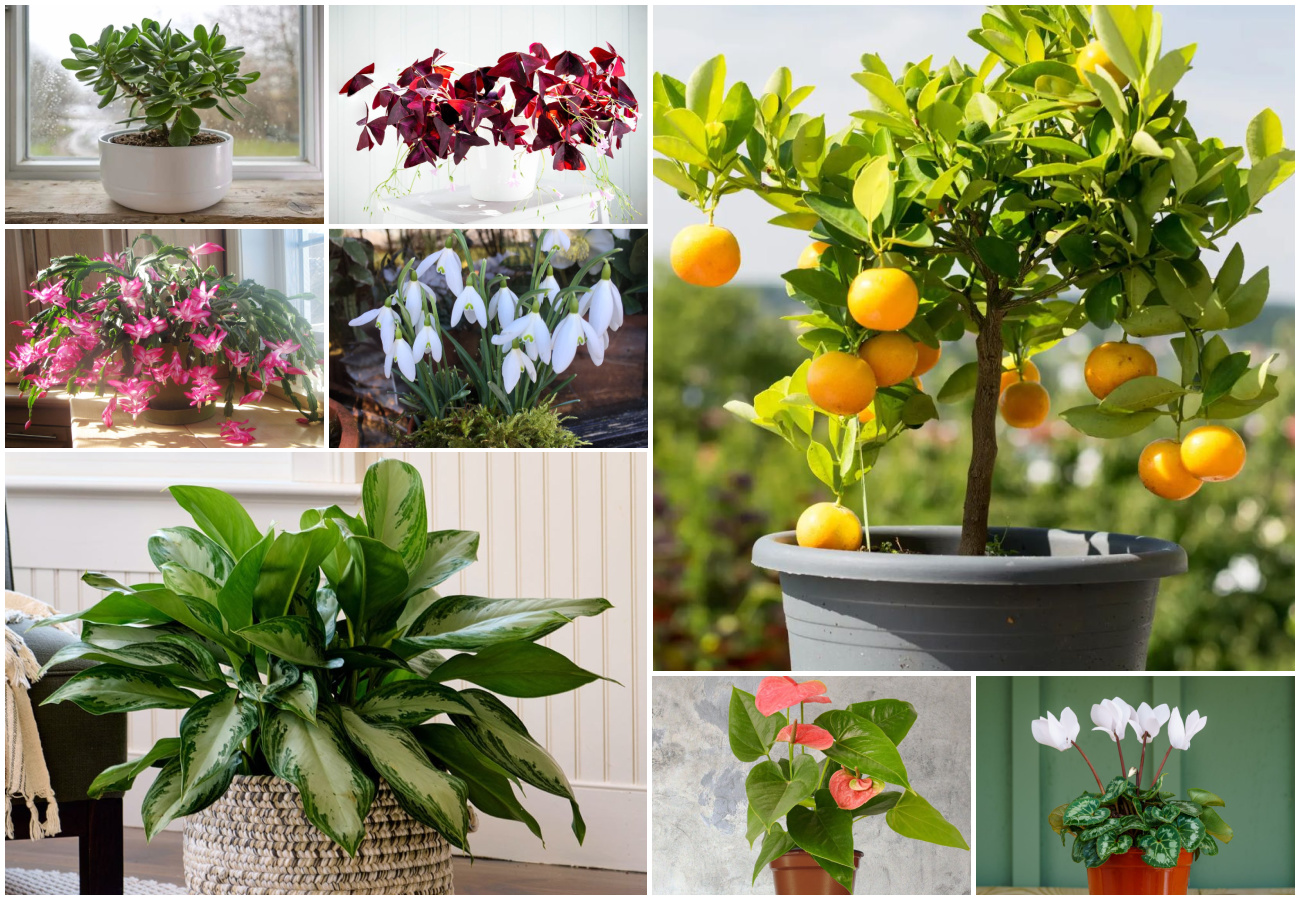Dracaena, also known as the dragon tree, corn plant or more recently as Sansevieria, is one of the most popular houseplants out there. It’s appreciated for its very easy care and is considered beginner-proof, but that doesn’t mean it’s impossible to run into issues with yours.
If your Dracaena isn’t looking its best, suffering from yellowing leaves, browning, drooping or other issues, keep reading. We’ll discuss 8 of the most common problems with Dracaena, their causes and what you can do to nurse your plant back to health!
Yellow leaves on Dracaena
One of the most common problems I see folks struggling with when it comes to this plant is yellow leaves on Dracaena. Annoyingly, it’s also one of the most ambiguous ones. Yellowing can be caused by a whole host of different things! Still, by comparing your situation with the possible causes, you should hopefully be able to figure out what’s going on.
Let’s go into the possible causes for yellowing so you can narrow things down and adjust the care you’re providing to solve the issue. Before we start: remember that it’s normal for dragon trees to lose their bottom leaves and eventually reveal a bare stem. It’s nothing to worry about as long as it doesn’t happen at an alarming rate.
Yellowing due to overwatered Dracaena
Yep, one of the prime causes for yellowing (and problems with Dracaena in general). Dragon trees like to dry out at least around halfway before you water again, but many houseplant enthusiasts end up overdoing it. During winter, you can let the soil dry out even more.
I only water mine around once a month during the cold months because it’s not in a very high-light spot and doesn’t use up moisture quickly at all! Pots without drainage or very dense soils can also easily lead to overwatering.
Uniform yellowing on both top and bottom leaves could indicate an overwatered Dracaena. This especially applies when combined with a droopy appearance and may be accompanied by browning/blackening. It can be bacterial or fungal. Bacteria from the genus Erwinia are commonly involved. In these cases, the affliction is called soft rot.
If you suspect you’ve somehow overwatered, unfortunately, you’ll likely have to uproot the plant so you can check for root rot. Any affected (black, brown, mushy, smelly) areas HAVE to go. You might have to cut off part of the stem, in which case you may find the guide to propagating Dracaena useful. Repot into well-draining, dry soil and watch your watering in the future.
Tip: By the way, overwatering often goes hand in hand with lack of light. Dracaena can survive in less well-lit spots in the home than many other houseplants, but you have to be very careful with watering if yours isn’t next to a window. It grows less quickly, uses less water and therefore doesn’t dry as fast: easier to make mistakes.
Yellowing due to underwatered Dracaena
Yep, it could be either over- or underwatering. Told you it was an ambiguous symptom! Leaves yellowing at the bottom of the plant before turning brown and crispy, eventually falling off, tend to indicate an underwatered Dracaena. Curling leaves are also common in thirsty plants.
Maybe it’s summertime and you forgot to increase waterings? Could the soil have compacted around the roots and need aeration? Is the plant due for a repot and drying out too quickly as a result (are there roots coming out of the drainage holes?)?
It’s even possible (believe it or not) for a plant to display signs of underwatering despite having been overwatered if the roots have died off due to rot, causing it to be unable to take up water.
Other causes for yellow leaves on Dracaena
If you get the sensation you’ve neither under- nor overwatered your Dracaena, there are a few other things to check for. Does any of the following apply?
- Sun damage: Dracaenas can take a lot of sun, but they need to be acclimated. Burned leaves can be distinctly faded and yellow or crispy and brown.
- Cold damage: Have you accidentally exposed your Dracaena to sudden cold? The damage can manifest in yellowing and blackening.
- Flecking: According to Gary Moorman, professor of Plant Pathology, odd yellowish flecks on Dracaena leaves are caused by an unknown pathogen. He recommends just providing the best possible care to combat it.
- Overfertilization: Have you used plant food lately? Yellowish to brownish spots, as well as crispiness, are typical. Flush the soil with distilled water.
- Pests: Thrips and spider mites leave distinctive white-yellow leaf spotting. Check the undersides of the leaves! Battle the invaders with home remedies like water combined with dish soap, neem oil or alcohol – or go straight for a (natural) insecticide.
- Tap water quality: These plants are sensitive to tap water high in minerals. We’ll discuss this in the section on brown tips, as that’s the most common symptom associated with this issue. In any case, regular flushing with distilled water helps.
Tip: Do you have a lucky bamboo (Dracaena sanderiana) plant in water that’s starting to yellow after being fine for ages? This is often caused by a lack of nutrients. Do some research on growing houseplants hydroponically and how to keep them fertilized in water.
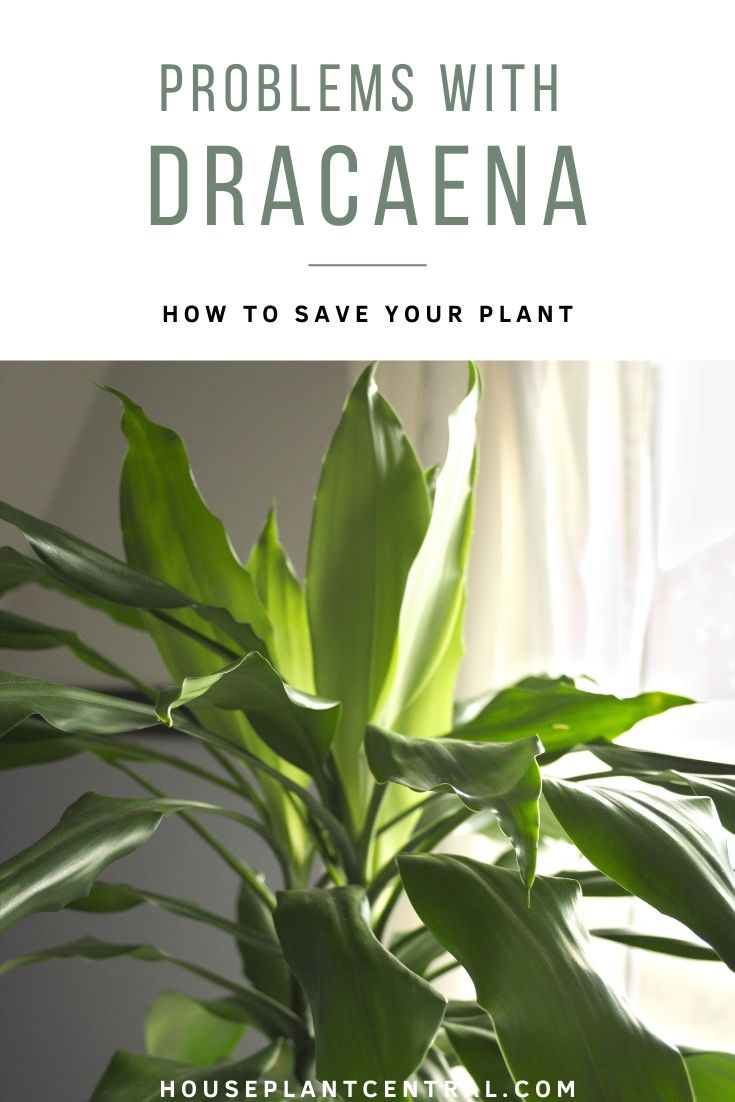
Brown leaves on Dracaena
Oh joy, another ambiguous problem! Brown leaves on Dracaena can have many different causes. Still, you may be able to diagnose the specific issue through a process of elimination.
Let’s have a look at what causes fully brown leaves so you can adjust your care accordingly. You’ll notice they’re very similar to the causes for yellow leaves, because after all, yellow often precedes eventual browning.
- Natural leaf loss: Do leaves brown and fall off at the bottom of your dragon tree? As long as it isn’t happening alarmingly fast and the plant is growing at the top, this may just be normal leaf regeneration. Bottom leaves eventually lose their usefulness.
- Overwatering: Is it possible you’ve overdone it? Browning and yellowing will often happen from the base of the leaf if this is the case, and occur anywhere on the plant. Have a look at this section.
- Underwatering: Yellowing and browning will usually start at the leaf tips, especially at the bottom of the plant.
- Cold exposure: Often happens if you transport your dragon tree after buying it, or forget to bring it inside. Yellowing and browning throughout the plant are common symptoms of cold damage.
- Sunburn: Although mild sunburn can cause a faded look on the leaves, heavier burn can go straight to a crispy brown. Acclimate more carefully next time.
- Overfertilization: This tends to cause yellow to brown spotting anywhere on the plant, with the affected areas on the leaves eventually going crispy. You can give the soil a flush with distilled water.
- Tap water: You’ll see this one return a lot. The minerals and fluoride in low-quality tap water are just not appreciated by corn plants, so flush regularly with distilled water! This issue is characterized by leaves browning from the tips, which we’ll discuss below.
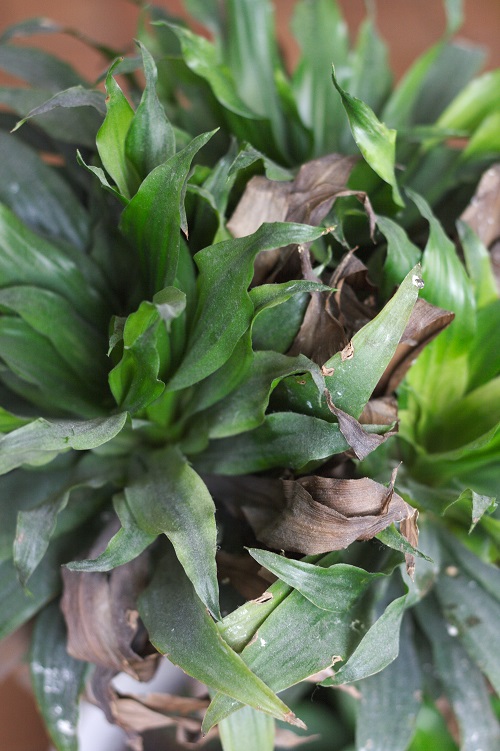
Dracaena with brown tips
This one is the bane of every dragon tree owner’s existence. Brown tips on Dracaena are probably the most common issue you can run into, and trust me, not even plant bloggers escape this one. Still, there are things you can do.
Let’s discuss first whether you should cut brown tips off your Dracaena, a common question. After that, we’ll go into the causes.
Should I cut brown tips off my Dracaena?
I understand the desire to remove these blemishes, because brown-tipped foliage can’t go back to normal. You can cut the brown tip off a leaf, but the line where you made the cut will often turn brownish as well. As for removing the entire leaf, there is some discussion on what to do with damaged foliage.
I personally prefer to leave brown-tipped leaves, as unsightly as they are. They’re not contagious like bacterial or fungal leaf spots are. And after all, the rest of the leaf still photosynthesizes and contributes to my plant’s health. If you fix the issue and new foliage comes out looking better, the ugly ones will eventually go naturally as your Dracaena grows.
Brown tips on Dracaena due to tap water/fluoride toxicity
I promised I’d discuss this extremely common issue in this section, so let’s see what this tap water thing is all about. Pull up your area’s tap water info, which will be listed on a page somewhere by your municipality or water supplier.
Some areas hit the jackpot with soft water that doesn’t have added chlorine or chloramine. I wouldn’t expect too many issues with brown tips on Draceana related to tap water if this is the case, although it’s not impossible. After all, municipalities still tend to add fluoride, which is great for our teeth but not so much for our houseplants.
Other zones, like mine (worst water in Spain, baby!) get very hard tap water with added chlorine/chloramine. Combine this with the normal added fluoride and you’ve got a Dracaena’s worst nightmare. The chlorine is harsh on them but evaporates, while minerals and fluoride build up in the soil over time. They can start to affect the plant’s health, which is what causes those typical brown tips on the leaves. The damage can eventually extend to the entire leaf.
So what can you do if you think this is affecting your dragon tree? Some houseplant enthusiasts collect rainwater and use this instead of tap water. The easiest solution, though, is a regular flush with distilled water. It’s free of minerals, so as you soak the soil and let it run out of the drainage holes, it should take some of that mineral build-up with it.
Voilà, a happier Dracaena, although you may have to fertilize more often as plant food will also be flushed out.

Other causes for brown tips on Dracaena
If you already flush with distilled water regularly, there may be some other cause for brown tips on your dragon tree. A few of the most common suspects are:
- Very low humidity. These guys are pretty tolerant, but if your home is really dry, they can start suffering. It can affect your own health as well, so a humidifier may be something worth considering.
- Underwatering. Is it possible you need to water more often, or maybe water isn’t reaching your plant’s roots properly? There is more info in this section.
- Overfertilization. This can cause symptoms similar to those of bad water quality/fluoride toxicity and is treated in the same way, so scroll back up a bit!
Dracaena with brown spots
Head back up to the corresponding section if your dragon tree has brown tips or fully brown leaves. This paragraph is specifically about brown spots, which can have a few different causes.
Crispy, localized brown spots may be caused by cold damage or sunburn. They’re also associated with overfertilization, which can be remedied by flushing the soil with distilled water.
Brown spots due to fusarium leaf spot on Dracaena
Dracaena plants can also get brown spots with yellow halos on the middle of their leaves. This is often a fungal infection called fusarium leaf spot, and it’s contagious, so separate that plant! Remove affected foliage and consider using a fungicide.
In houseplants, fusarium leaf spot is often caused by watering from above, which can get the leaves wet and result in issues. You can read more over at Greenhouse Management.
By the way, if you don’t think it’s fusarium, try checking out the effects of Erwinia bacterial rot on leaves. It can cause leaf spots in some cases.
Did you know? An interesting 1993 study found that Dracaena marginata appeared the most susceptible to Fusarium moniliforme, the pathogen causing fusarium. Dracaena sanderiana, on the other hand, seemed resistant.
Fusarium Leaf Spot of Dracaenas-Resistance of Species and Cultivars
Dracaena leaves falling off
If your dragon tree’s leaves are falling off at an alarming rate, your best bet for diagnosis is to look at what they look like before they drop and where on the plant they were located.
Leaves that look limp and just dislodge from anywhere on the plant scream overwatering. If they slowly yellow and then crisp up from the bottom, that sounds more like underwatering.
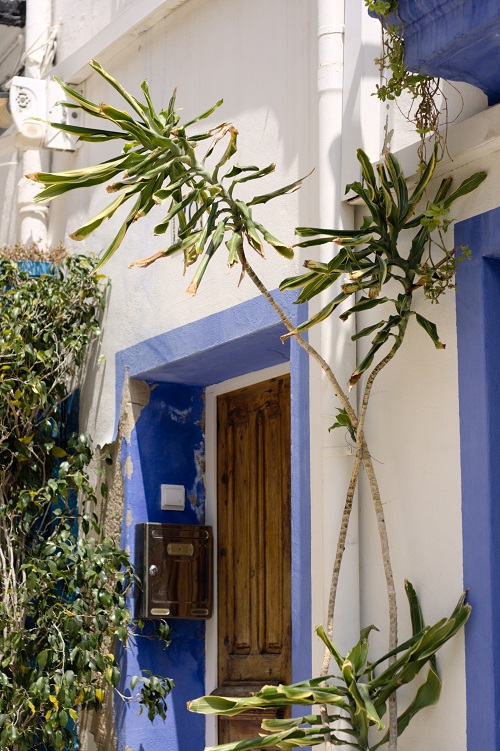
Dracaena leaves drooping
As with pretty much every issue, Dracaena leaves drooping is primarily associated with over– or underwatering. It’s a symptom of thirst, but because rot due to overwatering can cause roots to die off, a plant can look like it needs water even though it’s drowning.
Other common causes for droopiness include temperature issues (especially sudden cold) and pests (check the undersides of the leaves). If it happens after a repot, it’s usually not too worrisome: you broke a lot of hair roots and your Dracaena can get a little thirsty while it works on recovering them
By the way, when I say drooping, I mean the leaves looking limp, curled and hanging down. I don’t mean natural dragon tree stem growth, which can cause a totally tilted results due to plants naturally leaning towards the closest light source. If that happens very strongly on your plant, you may want to give it a bit more light.
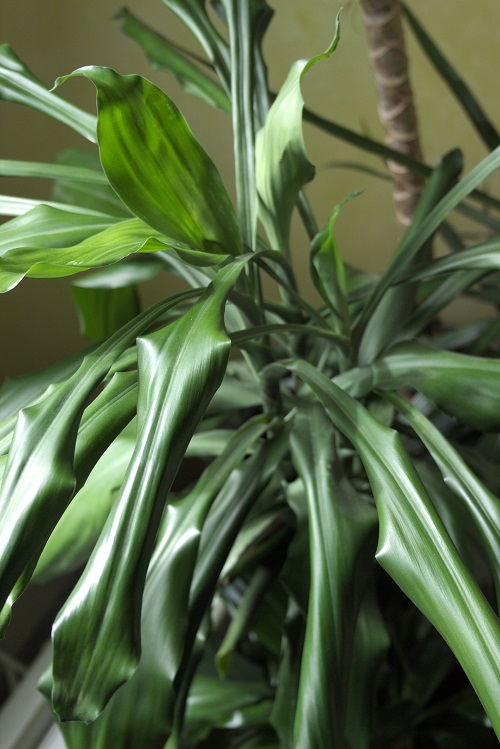
Dracaena stem rot
So far, we’ve discussed overwatering resulting in root rot in a couple of places. But what happens if you don’t discover the issue quickly enough and it progresses to the stem? If it turns mushy, smelly and black/brown, with leaves at the top usually suffering as well, there’s little doubt about what happened.
Not much of a mystery there in terms of diagnosis: you overwatered. Maybe it was bad drainage, maybe it was bad soil, maybe it was lack of light or maybe you just plain added too much water.
Whatever the cause, you’ll have to act quickly now to save your dragon tree. Remember the main rule for rot: all of the afflicted parts have to go. Even then, the victim often won’t end up pulling through.
Some plant enthusiasts actually don’t bother and toss the whole plant. If you don’t want to do that, you may want to have a look at the post on propagating Dracaena to find out how to re-root Dracaena stem pieces.
Dracaena wrinkled or shriveled stem
There’s this one odd issue I see sometimes where (one of) the stem(s) on a Dracaena begin(s) to shrivel, wrinkle and die from the bottom up. Surprise surprise: it’s often root rot due to overwatering. The roots have died off, leaving the stem to die from thirst.
In some cases, in older Dracaenas, stems just die for no apparent reason. If the rest of the plant and its roots look alright to you, simply cut off the dead parts and move on.
As you’ve likely concluded, an overwatered Dracaena is the most common cause of problems. These plants are pretty resistant and it’s honestly better to underwater than to overdo it. Growing your dragon tree in gritty succulent soil and a terracotta planter with a big drainage hole may be useful if you tend to be heavy-handed with the watering can.
Chase, A. R. (1993). Fusarium Leaf Spot of Dracaenas: Resistance of Species and Cultivars. University of Florida, Institute of Food and Agricultural Sciences, Central Florida Research and Education Center.

